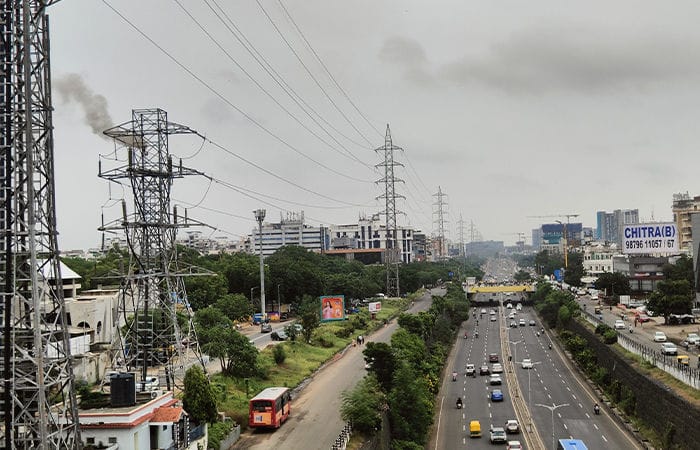Amid talks of deteriorating air quality across North India during winters, a glance at the situation in Ahmedabad has uncovered concerning numbers.
In the figures released by the Gujarat Pollution Control Board (GPCB), the Central Pollution Control Board (CPCB), and the Amdavad Municipal Corporation (AMC), the air quality index (AQI) of the city’s famous SG Highway stretch is found to be in ‘very poor’ condition.
Other areas of the city, including Naroda and Odhav, are found to have an average AQI of 100 throughout the year. This figure substantially surpasses the national average of 40.
Moreover, the AQI of Maninagar is also found to be between the ‘moderate’ and ‘poor’ categories.
The air quality of areas such as Ashram Road, Prahladnagar, Vastrapur, and Sardar Patel Stadium has also deteriorated towards the ‘poor’ from the ‘moderate’ category. Their AQI is lingering over the 200-mark.
Nitrogen oxide, volatile organic compounds (VOCs), and sulfur oxide are found to be in significant proportion in the air of the Vatva area.
Among vicinities in the walled city area, Khadia and Dariyapur have the worst AQI, as they have drastically deteriorated towards the ‘very poor’ from the ‘poor’ category.
The air quality is determined by checking the proportion of PM2.5 (particulate matter), nitrogen oxide, PM10, and carbon, among other pollutants, in the air.
Notably, the AMC, GPCB, and IIT Gandhinagar monitor the pollution levels in the city.
The cold, heavy winds of winter cause polluted particles to lay lower in the atmosphere, increasing the risk of health problems.



